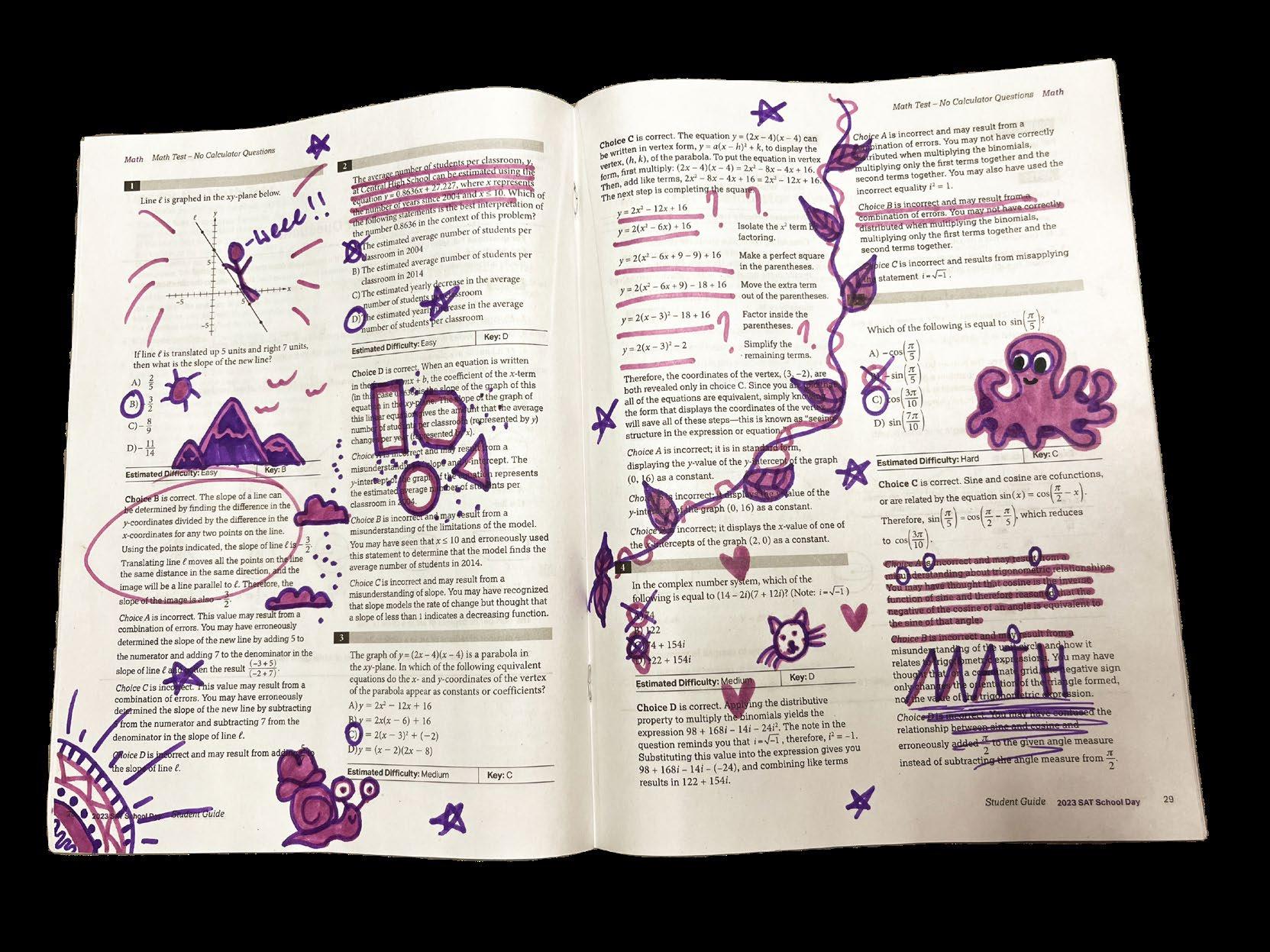
3 minute read
SAT Scare
SAT stress creeps up this time of year, though it doesn’t have to be as daunting as it seems
By Greta Reed, Staff
Advertisement
Offered only seven times a year, there is intense stress surrounding the SAT. Just one SAT is offered to juniors for free in Indiana. This SAT is offered in early March and is usually the first one juniors have taken.
College bound students will likely have to submit their SAT scores to a university of their choice. This adds immense pressure to the college admissions process and can also limit a student’s options.
For the past two years many students had the option to not submit their SAT scores because of the pandemic making it difficult to hold tests. Now that some col leges are beginning to require submissions as they once did, students are starting to feel the pressure to perform again.
“It [colleges requiring SAT scores] really shows nothing more than how a student can perform on standardized testing which doesn’t necessarily translate to the college experience. The college experience is more catered towards your final degree,” Melissa Wilzbacher, AP Language and Composition teacher, said.
Students can agree that taking any sort of standardized test is a stressful task, especially when it could impact your future.
“I am nervous for the SAT because I don’t know a lot about it and there is so much pressure to get a high score,” sophomore Izzy Tunstall said.
Junior Keziah Dobbins has a different mindset surrounding the SAT.
“Personally I think it’s all about balance,” Dobbins said. “If you do well in school and do extracurricular activities like sports, clubs, or even have an internship, colleges have more to look at than a test.”
College advisers and counselors have mentioned that after not requiring scores for almost three years, colleges have had to look deeper into essays and other factors that set students apart from one another, such as GPA, extracurriculars, volunteer hours, how high we can score on a long test taken in four hours,” Dobbins said.
Though not every student can excel on standardized tests, colleges are starting to require scores for certain specialized programs.
For example the SAT requirement for the Kelley School of Business at Indiana University is at minimum a “1370 (Evidence-Based Reading & Writing and Math)”.
Purdue’s engineering program is similarly rigorous with an “average SAT Composite of 1444” making it a very high average considering the Composite is out of 1600.
According to College Board, the average SAT score for the graduating class of 2021 was 1088, a 541 In Reading & Writing and a 538 on math.
“Some people are naturally good test takers, while others are not,” Dobbins said. “We can influence circumstances, in this
Study opportunities such as test prep programs, official SAT study guides, and practice material can be helpful in gaining confidence while testing.
Taking the SAT multiple times can also give students an advantage in knowing the organization of the test and how the questions are formatted.
College Finance states that “test publishers show that the average SAT improvement is around 60 to 70 points, on average, with a little bit of additional studying”.
Getting your goal score can be more attainable with the right study plan. While it’s important to take the SAT and try your best you shouldn’t worry too much about your score because “there are plenty of other ways to heighten your chances of being accepted into your dream school, one test will not threaten your future,” Dobbins said.
By Ellie Vanderbur, Staff
In movies artificial intelligence is often depicted as a threat to humankind and society. But now that this technology is a reality, people are finding ways to use it to learn and discover.
According to OpenAI, the creators of ChatGPT, the software is designed to interact in a conversational way.
This new software’s goal is to be able to answer questions in a more attentive way than current search engines, such as Google.
“The dialogue format makes it possible for ChatGPT to answer follow up questions, admits its mistakes, challenge incorrect premises, and reject inappropriate requests,” OpenAI said on their website.
Once ChatGPT launched, many educators did their own research to see what this meant for their teaching.
“I got on [ChatGPT], and I typed in some very specific questions about literature, the kinds of questions that I would offer my students to measure their thinking, and it spit out to me answers that, to me, resembled true human thought,” English department chair Doug Showley said.
Because this form of AI seems to be able to answer so many questions in a very specific way, Showley was automatically interested in what it would mean for teaching.
“There was an element of synthesis that went into [ChatGPT’s] answer. There was an element of judgment that seemed to go into the answer,” Showley said.
Educators quickly realized that they may need to make changes in the school environ-










